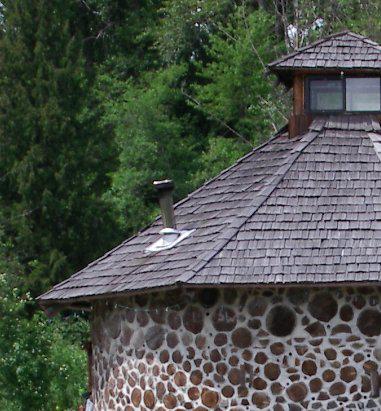A Quick Explanation of Cordwood Building

What is cordwood?
Cordwood is a method of building using split of whole rounds of wood that are mortared together like you would stones to build walls. Like many of the alternative building methods the origins of cordwood building are lost to history. There is some speculation that it originates from scandinavian countries like Norway or Sweden. These areas are blessed with an abundance of timber and other resources that make timber construction easier for them to do. But like I said nobody really knows for sure where the technique came from. While this method of building has not been scientifically tested there is a good amount of anecdotal evidence that claims this technique to be very effective, durable and long lasting. Are they warm? With a r-value of of .71-1.40 per inch a cordwood wall that is 16 inches thick can have an insulation value ranging from R-11 to R-22.4. If you take a look that Minnesota buildings codes the required wall insulative value for the coldest parts of Minnesota to be an R-value of 21. So even without any additional insulation you can potentially meet building code minimum standards. But those code shouldn’t stop you from either making that walls thicker like using 2 foot logs or adding extra insulation on the interior walls. Also when talking about log homes and other alternative building options that use a lot of mass you have include the thermal mass of the materials in your heating and cooling calculations. The mass of the materials moderates temperature swings within the structure which creates a more pleasant environment. Are they green? This always depends on how you approach the question. On one hand the amount of wood that goes into a cordwood home is phenomenal much more than the modern stick frame home. But is the harvesting and usage of wood a practice that is inherently damaging to the environment. I would argue that if done sustainably the usage of wood is a carbon neutral endeavor and if done even better can be used as a way to sequester carbon in long lasting homes for people. Sources: http://www.cordwoodconstruction.org/ http://energy.gov/energysaver/energy-efficiency-log-homes By Kickstart70 (talk) (Uploads) - Own work, CC BY-SA 3.0, https://en.wikipedia.org/w/index.php?curid=4336612 |
Further Reading |
“As an Amazon Associate I earn from qualifying purchases.”

